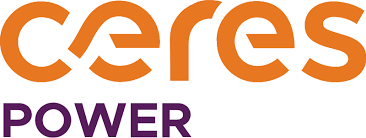By Elric Langton | 29 January 2025
Ceres Power Holdings, a leading clean energy technology innovator, has delivered a standout year in 2024, marking significant strides across financial performance, commercial partnerships, and technological advancement. Today’s trading update demonstrates its growing momentum, reinforcing its position as a major force in the clean energy sector.
Financial Performance:
Ceres Power has posted pretty good financial results for the year ending 31 December 2024, reflecting the success of its strategic initiatives:
Record order intake exceeding £110 million, driven by new manufacturing and electrolyser system partnerships.
Revenue guidance at the upper end of expectations—between £55-60 million, a staggering ~150% increase from 2023 (£22.3 million).
Gross margins are anticipated at 78-80%, a significant improvement from 61% in 2023.
Cost optimisation efforts deliver a 15% reduction in the annualised cost base.
Cash and short-term investments of ~£102 million as of 31 December 2024, ensuring financial stability.
Commercial Breakthroughs:
Ceres has made considerable headway in expanding its commercial partnerships and market penetration, reinforcing its global footprint:
Taiwan: Delta Electronics is advancing towards manufacturing for data centres and industrial hydrogen applications.
Japan: Successful completion of upfront technology transfer to Denso Corporation.
India: SOEC commercialisation initiated with Thermax, accelerating entry into a high-growth market.
South Korea: Doosan’s factory commissioning for SOFC stack and cell production remains on track for H2 2025 commercial launch.
Ongoing collaborations with Bosch, Weichai, and Shell, driving key product milestones, including enhanced power stack and system development.
Strategic Positioning:
Ceres’s 2024 achievements have solidified its role as a key player in the clean energy transition:
Global Technology Standard: Widespread adoption of its technology cements Ceres as a benchmark in the industry.
Diversification: Entry into the electrolyser market through new strategic partnerships expands its addressable market.
Rising Market Demand: Increased adoption of power technology, driven by AI-driven data centres and grid electrification challenges.
Commercialisation Milestone: Doosan's first power system products are set for launch in late 2025, unlocking royalty revenue.
Outlook:
Ceres is well-positioned for long-term expansion with a robust financial standing and accelerating commercial momentum. Its technology is set to play a pivotal role in global decarbonisation, capitalising on the rising demand for sustainable energy solutions.
CEO Phil Caldwell reflected on the company’s progress:
“2024 was an exciting year for Ceres as we accelerated our commercial delivery with two new major manufacturing licensees and continue to establish Ceres as the industry standard through the adoption of our technology globally. As our technology becomes deployed at scale, we are positioned to drive decarbonisation across multiple sectors.”
You may recall that I have previously compared Ceres Power’s business model of Arm Holding. Both companies employ a similar licensing-based approach, offering significant potential for scalable growth and recurring revenue streams. Here’s a summary of the key similarities:
Licensing Model
Like Arm, Ceres focuses on developing and licensing its intellectual property (IP) to leading Companies in their respective industries. Rather than manufacturing products directly, both firms enable their partners to utilise their designs and technology to create final products.
Dual Revenue Streams
Both companies generate income through initial licensing fees and ongoing royalties. Much like Arm, Ceres receives upfront payments for access to its technology, followed by royalties linked to the production volume of products incorporating its IP.
Transition to a Royalty-Driven Model
Ceres is currently in a transition phase, moving from an early-stage licensing model to a more mature, recurring royalty model, as Arm did. This evolution mirrors Arm’s growth trajectory, which saw substantial value creation as it shifted towards a royalty-based approach. It is the transition phase investors need to keep a keen eye on.
Capital-Light Structure
Both businesses benefit from a capital-light model. By focusing on design and licensing rather than manufacturing, they avoid the significant costs associated with maintaining production facilities, enabling higher profit margins.
Strategic Partnerships
Like Arm, Ceres Power seeks collaboration with multiple partners across a range of applications and markets. This strategy facilitates broad market penetration and diversification of revenue streams.
While the comparison is valid, Ceres Power operates in an entirely different sector—clean energy—whereas Arm is rooted in semiconductor design. Moreover, Ceres is at an earlier stage in its commercialisation journey, with its first royalty revenues expected in the near future. Investors should consider this, along with the clean energy sector's unique risks and market dynamics, when evaluating Ceres Power’s prospects.
Hence, Ceres finds itself in the Lemming category rather than earning a Small Company Champion designation—for now.
Conclusion: Ceres Power’s record-breaking year highlights its ability to execute at scale, capitalise on market trends, and build a sustainable foundation for future growth. With strong financials, expanding commercial partnerships, and a clear strategic vision, the company remains a formidable player in the transition to clean energy.
Opinions
We offer no advice or solicit the purchase of shares in any companies we discuss. However, shares go up and down in value, making your financial situation risky.
The views and opinions contained within these editorials are for research purposes and are the opinions of the author(s). We aim to be as accurate as possible but stress you should also perform your research and never act solely on the contents of these editorials.




